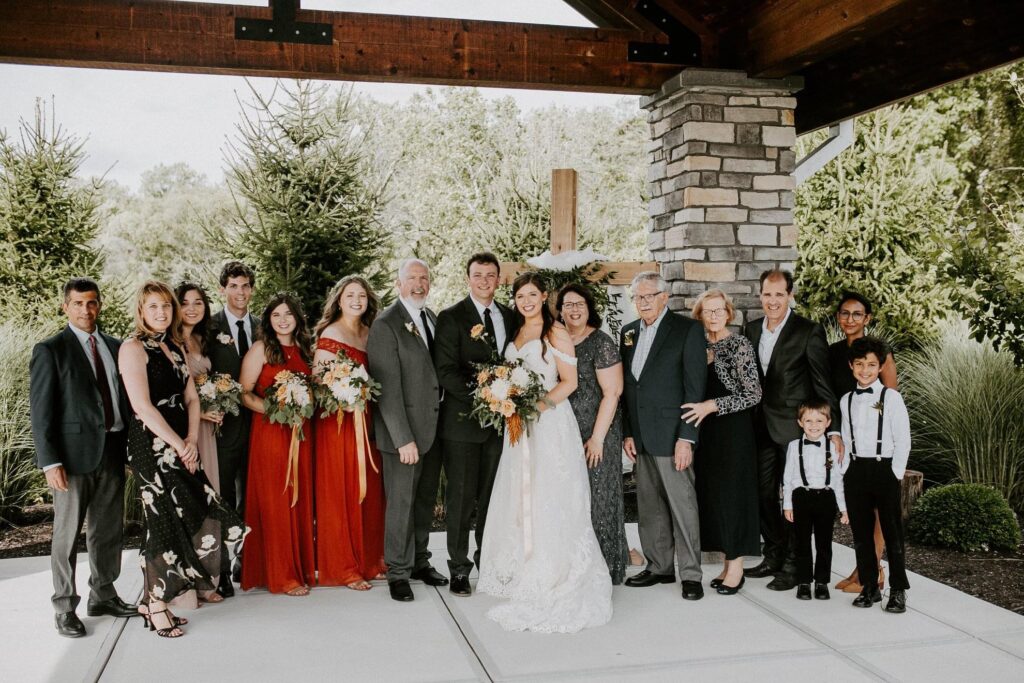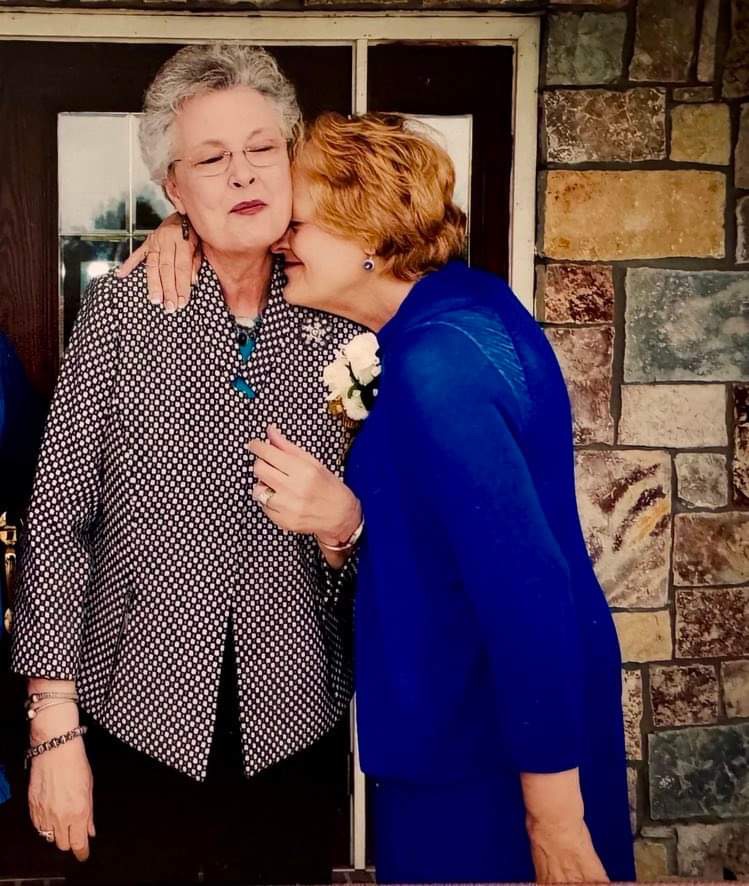According to a National Health Statistics Report by the Centers for Disease Control and Prevention (CDC), approximately 13.4% of women of reproductive age (15-49) in the United States have difficulty getting pregnant or carrying a pregnancy to term. For cervical cancer patients and survivors, the risk of infertility is significantly higher due to treatments such as surgery, chemotherapy, and radiation. Studies suggest that approximately 80% of cervical cancer patients and survivors are interested in parenthood, and up to 38% of them may experience infertility or difficulty conceiving after treatment.
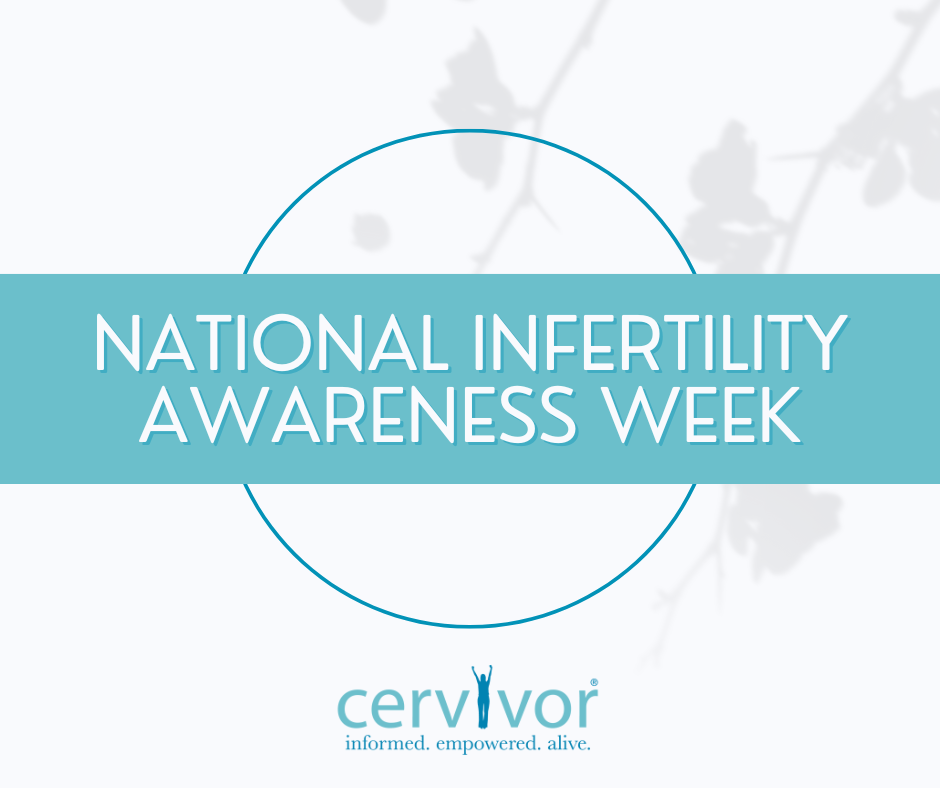
That’s why, during Infertility Awareness Week (April 20 to 26), Cervivor is amplifying this critical conversation—talking openly about the often overlooked emotional and physical toll of infertility after cervical cancer.
The Silent Struggle of Infertility After Cervical Cancer
Infertility after cervical cancer is a harsh reality many survivors face, often in silence. The loss of fertility can be a profound grief that lingers long after treatment has ended, affecting relationships, sense of identity, and future plans in unimaginable ways. Feelings of isolation and loneliness can be overwhelming, especially for those who’ve already endured the trauma of a cancer diagnosis. Here, two members of the Cervivor community open up about the different ways infertility after cervical cancer has shaped their lives.
Heidi’s Story
Heidi Burgard’s journey with cervical cancer began when she was 29. In a long-term relationship and hoping to start a family, her diagnosis upended her plans and forced her to confront a double loss: her fertility and, eventually, her relationship.
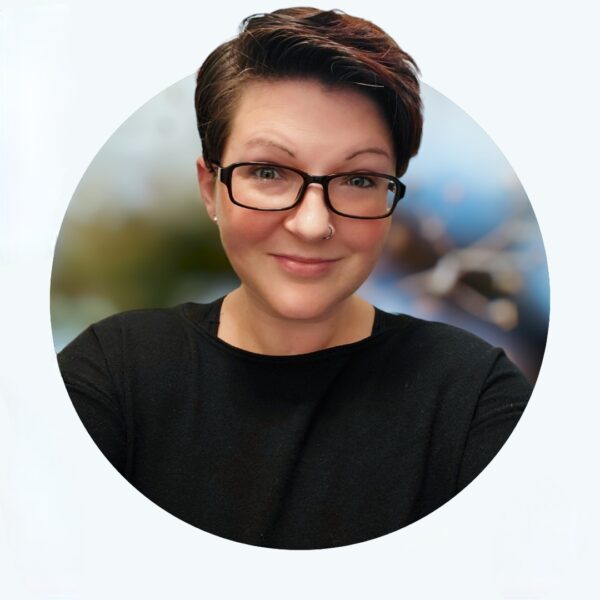
“Losing the ability to have children and experiencing the loss of relationships along the way was incredibly difficult,” says Heidi, who is from Northern Colorado. While fertility preservation was discussed at the time of her diagnosis, she chose to prioritize her health and begin treatment immediately. “I still reflect on that decision,” she shares. “And after experiencing three recurrences, I believe—though it was incredibly difficult—it was the right one for me.”
The emotional toll extended beyond her health. After her first recurrence, Heidi’s partner ended their relationship, telling her it was “too much” to handle. “It was heartbreaking and eye-opening—one of those moments that shows you not everyone is built to stand beside you when life gets hard. That chapter closed, but it helped shape who I am today,” says Heidi, who has worked in banking for the last 17 years.
Today, Heidi is passionate about helping others feel seen and heard. She finds strength in storytelling, advocacy, and shared experiences. “Survivorship is about both healing and rediscovery,” she says, crediting the Cervivor community for helping her recovery. “I’m grateful to be part of a community that embraces the full complexity of that journey.”
Cindy’s Story
At 35, Cindy Trice received a life-altering diagnosis: Stage II cervical cancer. This was in 2004, and she had just graduated from veterinary school and was three months into an internship in Tampa, Florida. While survival became her focus, the loss of fertility was a lasting consequence.
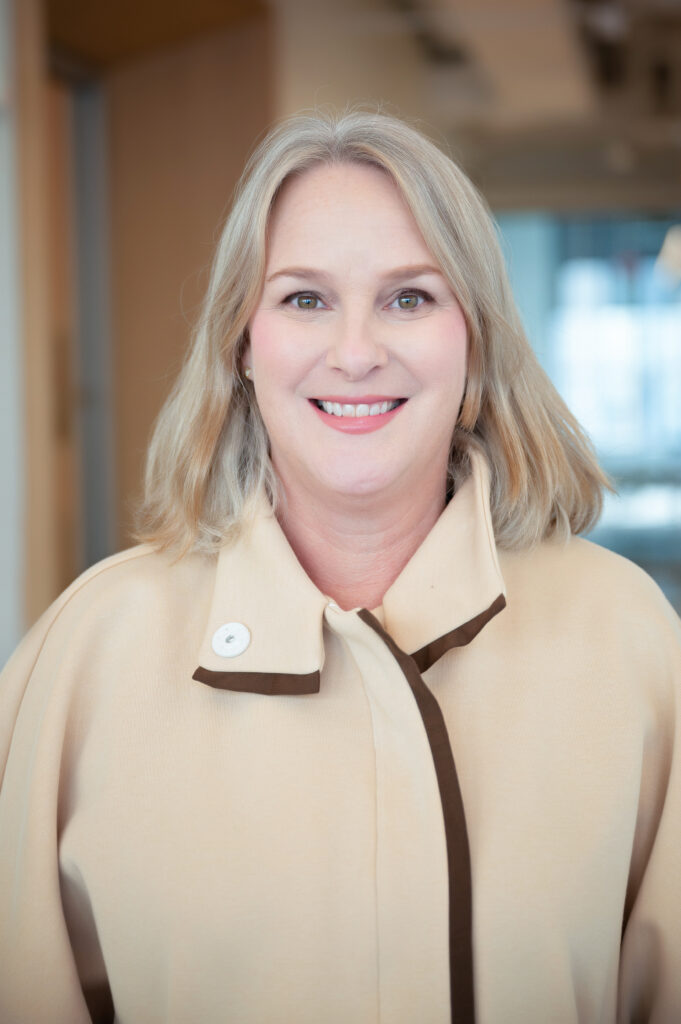
“I’m not even sure I wanted children… but over the years, the loss of the ability to have children has haunted me,” she shares. Her candid reflection captures the complex and often conflicting emotions that many cancer survivors face—grief not only for what was lost, but also for what might have been.
Now a 25-year survivor, Cindy has transformed adversity into advocacy. Her experience inspired her to co-found KickIt Pajamas, a company focused on creating stylish, dignified hospital and recovery wear for women—the kind she and other Cervivors longed for during treatment. What began as a personal need has evolved into a mission to uplift and support others facing similar challenges.
Through KickIt Pajamas and her ongoing involvement with Cervivor, Cindy helps others find strength in their own stories. Her journey is a testament to resilience, reinvention, and the healing power of shared experience.
How Cervivor Can Help
At Cervivor, we understand that survivorship is more than just making it through treatment. It’s about navigating the emotional aftermath, redefining your future, and finding hope again, like both Heidi and Cindy shared. Our community offers a safe space to process grief, share stories, and connect with others who truly understand.
Additionally, financial assistance is available for those pursuing parenthood, helping to ease the burdens of this often unpredictable journey. Read on about a special gift fund and keep reading for our latest list of trusted fertility resources and partners.
The Virginia “Ginny” Marable Cervivor Baby Gift Fund: A Lifeline for Survivors
During an online seminar Cervivor hosted in April 2020, Cervivor Founder and Chief Visionary Tamika Felder met Ginny Marable, a fellow cervical cancer survivor and 36-year-old human resources director. As Tamika spoke about having to “bury” her hope of having children, Ginny was struck. “I was very moved by Tamika’s story,” she says. “She wasn’t really given the choice to preserve her fertility.”
Ginny, who married her husband Sean in November 2018, was thrilled when doctors thawed one of their frozen embryos. The embryo split, and their gestational carrier gave birth to identical twins in March 2021. With their family now complete, Ginny and Sean were left with four remaining embryos—and a big decision. It didn’t take long for Ginny to know what she wanted to do: she offered the embryos to her friend.
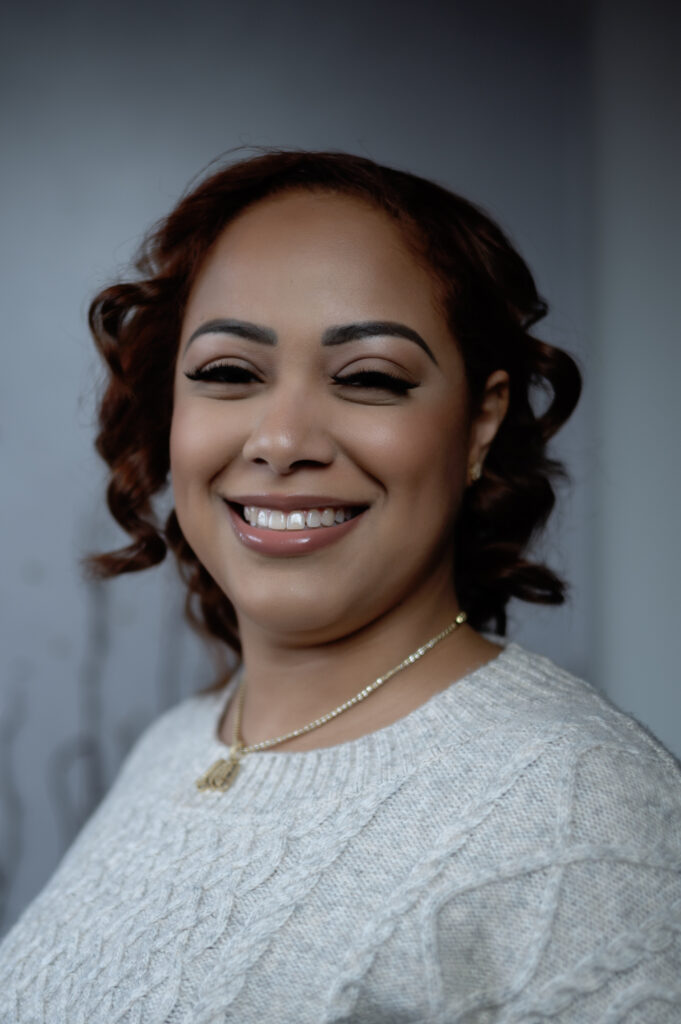
Out of that generosity and connection, The Virginia “Ginny” Marable Cervivor Baby Gift Fund was born. This fund offers tangible support for cervical cancer survivors navigating fertility services and family-building options.
Dulcely Tavarez, the first recipient of the Cervivor Baby Gift Fund, shares: “This grant has been such a meaningful part of my journey to parenthood. It’s not only helping to ease the financial burden of adoption, but it’s also a powerful reminder that I’m not alone. Knowing there’s a community standing beside me, cheering me on, gives me so much strength and hope.”
Dulcely Tavarez
Pathway to Parenthood: Helpful Resources
Access to the right resources can make all the difference. Cervivor’s Pathway to Parenthood Helpful Resources offers a comprehensive list of organizations, support groups, and services that support fertility preservation, family-building, emotional care, and financial assistance—providing a vital lifeline for survivors looking to start or grow their families.
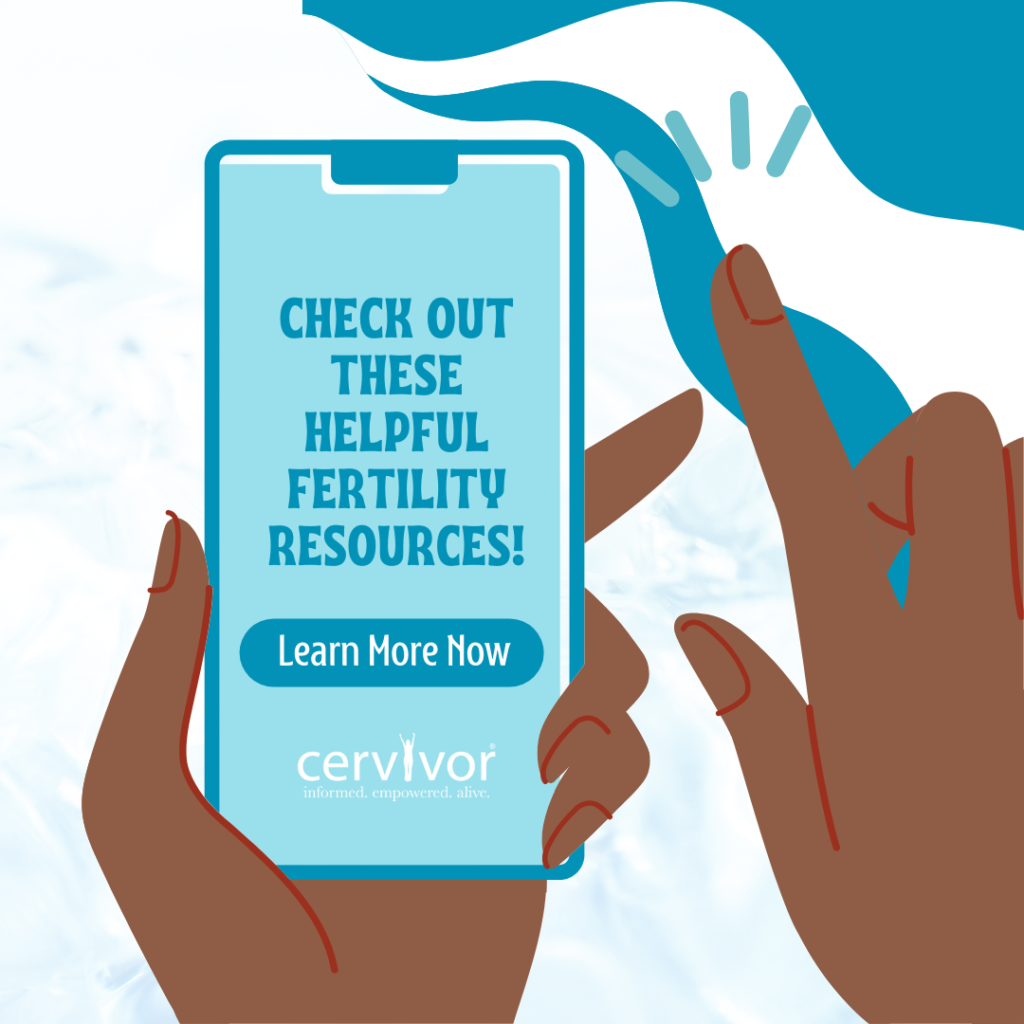
- Alliance For Fertility Preservation
- The Brown Broken Egg
- Cade Foundation
- Empower With Moxi
- Embryo Donation Support
- Fertility For Colored Girls
- Fertility IQ
- Fertility Within Reach
- Gift of Parenthood
- Help Us Adopt
- Journey of Parenthood
- Our Miracle Child
- RESOLVE
- Starfish Infertility
- We Adopt Too
- Worth the Wait
Whether you’re exploring adoption, surrogacy, or fertility treatments, these resources can provide valuable guidance, support, and hope as you navigate your path to parenthood.
How You Can Help
For many survivors, the journey doesn’t end with remission. Cancer treatments can leave lasting scars, including the pain of infertility. By acknowledging this often-overlooked struggle, we can build a more compassionate community that supports survivors in every part of their healing.
Here are some meaningful ways you can make a difference—within the Cervivor community and beyond:
- Raise awareness about how cervical cancer treatments impact fertility
- Share stories like Heidi’s and Cindy’s from the Cervivor website
- Share your own story about infertility and cervical cancer
- Advocate for fertility preservation and post-treatment support
- Offer survivors a listening ear and a safe space to share
- Donate to the Virginia “Ginny” Marable Cervivor Baby Gift Fund to help someone take one step closer to the family they’ve dreamed of
Infertility Awareness Week reminds us that the path to parenthood may look different for cervical cancer survivors—but different doesn’t mean impossible. Through shared stories, community support, and advocacy, we can bring hope and healing to those navigating this difficult road. Together, we can turn empathy into action. Every shared story, every act of support, and every donation brings us closer to a world where no one has to walk this journey alone.
